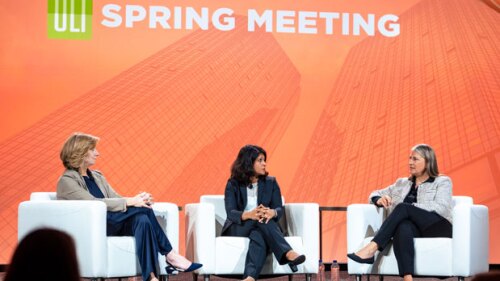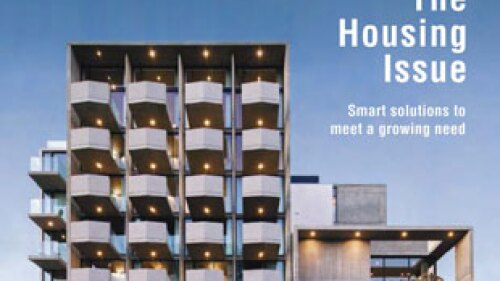“It is all about jobs,” declared Robert Kline, CEO of R.W. Kline Companies and moderator of the session on office development at the ULI Spring Council Forum in Phoenix, Arizona. If jobs aren’t created, people don’t need office space. And since the United States is experiencing a so-called jobless recovery, new office development is stagnant to nonexistent in most U.S. markets.
Kline and his fellow panelists—Alex Rose, senior vice president of California-based Continental Development, and Ryan Whitaker, western director of equity investments, National Real Estate Advisors—all agreed that success in the office market is going to be measured submarket by submarket. What’s more, Rose said that for the immediate future office development is mainly going to involve reusing and repositioning existing assets.
Both Rose and Whitaker wondered where speculative development was going to come from. In California, for instance, there are build-to-suit projects for single tenants, but little else, except in San Francisco, which Whitaker described as an “outlier.” Whitaker noted that his company and others are looking at “new uses for office buildings.” For example, his company—National Real Estate Advisors—recently converted about half of a major office building in downtown Phoenix into a Westin Hotel.
Whitaker thought that there was a lot of interest from institutional investors in existing product. Rose added that “if you could buy an existing building for $50 a square foot, why would anyone build new?”
Kline then posed the following question: Is there tenant demand, and if so, where is it coming from? The answer was that there are only four sectors with stable tenant demand. These are health care, government, education, and technology. Tenants are looking for product that is flexible and highly efficient. There is also a huge emphasis on “transit adjacency.” Going forward, all of the panelists agreed that access to transit will be a big driver of tenant demand.
There was also general agreement that “green development” is here to stay. Rose called it a “prerequisite to doing a deal”; Whitaker called it a “differentiator.” All the panelists agreed that tenants want green space and that many tenants like government and universities will not even consider space that isn’t green. Green is also becoming part of corporate culture. The bottom line was: you are going to have to “go green” to stay competitive.
Another focus of discussion for office development was the issue of downtown versus the suburbs. Dense urban markets like New York, Boston, San Francisco, and Washington, D.C., have strong downtown markets, but most others do not. To be successful in the suburbs, you must differentiate your product. Successful suburban projects will need to be near amenities. They will have to have places where employees can go to lunch. It helps to be near transit and they had better be green, as mentioned above.
The session concluded with a focus on regional economic development drivers. The panel thought that hospitals and colleges can make office development feasible. Rose felt that medical office buildings near major hospitals were a good investment. Kline emphasized investing in global gateway cities, but everyone agreed that new development will remain slow for the foreseeable future, so developers and investors should focus on repositioning or repurposing existing assets.



